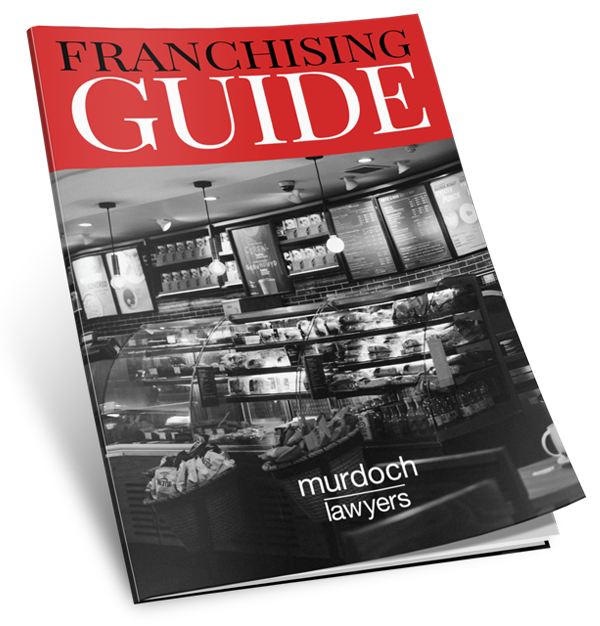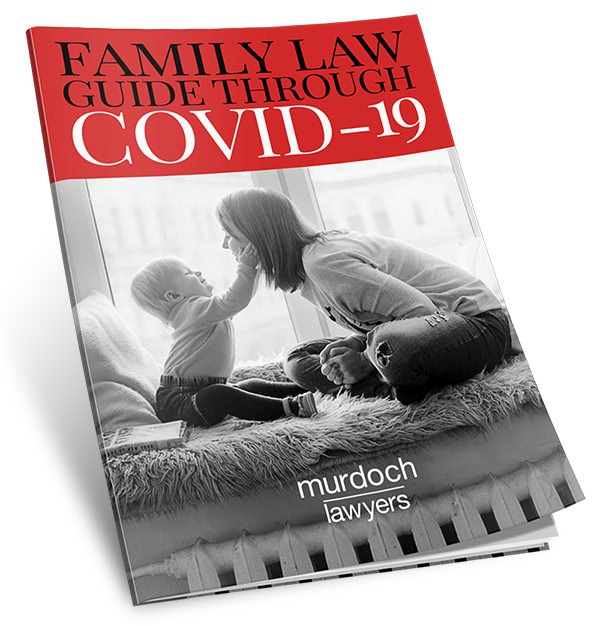
Difference of opinion
Unfortunately, “casual employee” is not a term defined in the legislation. Its meaning comes from the case law, which is continually evolving.
Currently, there is also a significant discrepancy between:
- the definitions of “casual employees” in the Modern Awards which are not always consistent, for example:
- under Clerks Private Sector Award – “a casual employee is an employee engaged as such”;
- under Building and Construction General On-site Award – “a casual employee is one engaged and paid in accordance with the provisions of this clause”; and
- the case law.
General notions of casual employment
A casual employee:
- has no guaranteed hours of work;
- usually works irregular hours as needed;
- is not entitled to paid leave;
- is not entitled to notice on termination or redundancy pay.
In exchange, casual employees are entitled to:
- an additional loading, usually 25%, on top of their usual hourly rate. This is called ‘casual loading’ and is paid in compensation of the benefits a casual employee does not receive;
- 2 days unpaid carer’s leave and 2 days unpaid compassionate leave per occasion;
- up to 5 days unpaid family and domestic violence leave (in a 12-month period);
- unpaid community service leave;
- end their employment without giving notice;
- protection from unfair dismissal, where the employee is a long term casual.
Comparison to full time and part time
Full-time employees are those who work at least 38 ordinary hours per week on average, whereas part time employees work less than 38 ordinary hours per week, but still have regular and predictable work hours.
Full-time and part-time employees both have ongoing employment (unless they are on a fixed-term contract) and can expect to work regular hours each week. They are entitled to paid leave, redundancy pay and notice on termination.
Relevant case law
In the decision of Telum Civil (Qld) Pty Ltd v CFMEU, the Full Bench of the Fair Work Commission determined that, where an employer engaged a casual employee under an award or enterprise agreement, then, if the engagement is consistent with the terms of the relevant industrial instrument, the relationship can be treated as casual.
Most awards and enterprise agreements simply describe a casual as an employee ‘paid and/or engaged as such’. Accordingly, the Fair Work Commission held that, provided an employee was referred to as a casual and paid a casual loading, they could legitimately be considered casual – notwithstanding their actual pattern of work.
However, a recent decision of the Full Court of the Federal Court of Australia, WorkPac Pty Ltd v Skene [2018] FCAFC 131 (Skene) has overturned this conventional wisdom.
In that case the Federal Court held that an employee who had been categorised as a ‘casual’ by the employer, WorkPac, was not in fact a casual but rather a permanent employee and, as a result, entitled to the paid annual leave associated with such employment on his termination.
The decision overturns the understanding that an employee who is ‘paid and/or engaged’ as a casual pursuant to an industrial instrument (that is, the employment agreement engages them as a ‘casual’ and the employer pays them the casual loading) can be treated as a casual employee even in circumstances where the pattern of days and hours worked by the employee might, applying common law principles, suggest otherwise.
In Skene the Federal Court rejected the approach in Telum and had regard to the broader common law tests of casual employment to determine whether an employee was in fact a ‘casual’ for the purpose of the applicable industrial instrument.
In doing this, the Federal Court placed particular significance on casual employees not having a ‘firm advance commitment’ from the employer for continuing and indefinite work according to an agreed pattern.
The Federal Court developed this further at paragraph 173:
The indicia of casual employment referred to in the authorities – irregular work patterns, uncertainty, discontinuity, intermittency of work and unpredictability – are the usual manifestations of an absence of a firm advance commitment of the kind just discussed. An irregular pattern of work may not always be apparent but will not necessarily mean that the underlying cause of the usual features of casual employment, what Hamzy identified as the ‘essence of casualness’, will be absent.
It was held that the payment of casual loading might reflect the intention of the parties but is not determinative. In this regard the Federal Court observed at paragraph 182:
The payment by the employer and the acceptance by the employee of a casual loading, like the description of the type of employment given by the parties in their contractual documentation, speaks to the intent of the parties to create and continue a casual employment. But the objective assessment will need to consider whether that intent has been put into practice and if achieved, has been maintained. The objectively demonstrated existence of a firm advance commitment to continuing and indefinite work (subject to rights of termination) according to an agreed pattern of work will ordinarily demonstrate a contrary intent and the existence of on-going full-time or part-time employment rather than casual employment. The key indicators of an absence of the requisite firm advance commitment will be irregularity, uncertainty, unpredictability, intermittency and discontinuity in the pattern of work of the employee in question. Those features will commonly reflect the fact that, whilst employed, the availability of work for the employee is short-term and not-ongoing and that the employer’s need for further work to be performed by the employee in the future is not reasonably predictable.
The Full Court held that the determination of whether an employee is a casual must be conducted by assessing ‘the real substance, practical reality and true nature of the relationship’ as opposed to adopting the description the parties have given to the relationship.
The Full Court endorsed the notion that, in order for an engagement to be considered casual:
- there should be no certainty about the period over which the employment is offered; and
- there should be an informality, uncertainty and irregularity about the engagement.
So, if an employment relationship has a level of certainty, regularity and predictability about the hours to be worked, then it is inconsistent with being a casual engagement.
Applying this analysis to the facts led the Federal Court to find that Mr Skene was not a casual employee and therefore WorkPac was liable to pay both compensation for its failure to meet entitlements to annual leave and penalties in respect of that failure.
We understand a number of multimillion dollar class actions have been launched against labour hire firms who failed to pay leave entitlements on termination of casual employees employment.
Long-term casual employees
A ‘long-term casual employee’ who is employed on a ‘regular and systematic basis’ may have access to entitlements and protections not afforded to other types of casual employees.
Long-term casuals are casual employees who have been employed by the employer on a ‘regular and systematic’ basis. The term ‘regular and systematic’ is the key term in defining casual employment relationships.
Evidence of regular and systematic employment might include a clear pattern or roster for the hours/days worked. Even where there is no pattern/roster, evidence of regular and systematic employment may be established where:
- the employer regularly offers work when suitable work is available at times when the employee has generally made themselves available; and
- work is offered and accepted sufficiently often that it is no longer occasional or irregular.
Employers of long-term casuals should be aware that these employees can:
- request flexible working arrangements;
- take unpaid parental leave;
- access the same unfair dismissal rights as permanent employees;
- request to convert to full time or part time employment in certain circumstances.
However, they don’t get paid leave or notice of termination; even if they work regularly for a long time.
From a risk perspective, a casual employee working under a regular and systematic basis may claim their casual status was misclassified and they were treated as part-time or full-time employees, therefore having access to the same annual leave, personal leave and redundancy entitlements of full-time or part-time employees.
Under some Modern Awards, there is also an obligation for the employer to advise casual employees who have been working for 6 months on a regular and systematic basis that they can elect to convert to full-time or part-time employment.
Converting to full-time or part-time employment
Casual conversion provides casual workers with the option to request that their employment be converted to full-time or part-time employment after completing a minimum period of service and subject to certain restrictions.
As casual conversion rights have been absent from many businesses and industries for some time, the concept of casual conversion may be foreign to some employers. In fact of the 122 modern awards only 28 previously contained a casual conversion clause. However, from 1 October 2018, casual conversion rights and obligations will affect the majority of award covered employers across Australia.
The FWC’s decision to introduce casual conversion clauses comes after a number of employer and union bodies petitioned the FWC to introduce a casual conversion clause into all modern awards as part of the FWC’s 4 yearly review of modern awards in 2017. The full bench of the FWC ultimately held that the inclusion of casual conversion clauses in modern awards is necessary in order to meet modern award objectives. Specifically the FWC accepted the proposition, put forward by the Australian Council of Trade Unions, that unrestricted use of casual employment without the safeguard of a casual conversion clause may operate to undermine the fairness and relevance of the safety net of modern awards and national employment standards.
The Commission found:
There is no constraint on the employer choosing to engage as casuals persons who equally might readily be engaged as permanent full-time or part-time employees under the terms of the modern award. The lack of any such constraint creates the potential to render the NES irrelevant to a significant proportion of the workforce.
While the FWC noted higher casual rates are designed to compensate employees for entitlements such as annual leave and personal leave, they fail to account for the negative impacts long-term casual employment can have on workers. These include workers continuing to work while sick due to concerns that absences will affect future employment, poorer health and safety outcomes and a limited career path.
Although the FWC found the majority of employers did not exploit their ability to engage casual staff where the NES entitlements did not apply; some employers did appear to employ individuals as casual workers indefinitely despite the employees seeking, or at the very least being interested in, a permanent position.
Can employers refuse an employee’s request to convert to full time employment?
An employer may refuse a casual employee’s written request to convert to permanent employment after consulting with the employee and provided the refusal is on reasonable grounds. Reasonable grounds may include:
- the conversion would require significant adjustment to the casual employee’s hours of work to accommodate them in full-time or part-time employment under the applicable modern award;
- it is known or reasonably foreseeable that the casual employee’s position will cease to exist within the next 12 months;
- it is known or reasonably foreseeable that the employee’s hours of work will be significantly reduced within the next 12 months; or
- it is known or reasonably foreseeable that there will be a significant change in the days and/or times at which the employee’s hours of work are required to be performed in the next 12 months which cannot be accommodated within the days and/or hours during which the employee is available to work.
The model clause requires employers to consult with employee’s regarding its decision to refuse a request for conversion. Where the employer refuses a regular casual employee’s request to convert, the employer must provide the casual employee with the employer’s reasons for refusal in writing within 21 days of the request being made.
If an employee does not agree with an employer’s refusal they may have recourse to the dispute resolution provisions of the applicable modern award and to the adverse action provisions of the FW Act.
Key take away
As a general rule, you can determine whether a staff member should be classified as a casual employee by looking at their pattern of work. A casual position is usually one that has irregular hours of work. Remember that even when a position is initially genuinely casual, these roles often become more set and regular, and so it is important to review employee classifications regularly.
If you employ casual employees, it is essential to review how you engage them. If your casual staff have regular and systematic work arrangements, you may need to back pay leave entitlements.
Ask yourself:
- how far in advance your casuals receive a roster?
- do your casuals work in predictable, regular patterns?
- is there a commitment to specific hours and days?
Also, if you think your casuals could actually be considered to be permanent staff, consider converting their employment to full-time or part-time employees.
Finally, review your employment contracts to ensure that you clearly identify casual loadings in monetary terms. This could help avoid double dipping.
Conclusion
Casual employment can work well for both employers and employees. For employers, having flexibility around payroll costs is arguably the number one attraction of hiring a casual. Employees are often happy to trade off certain entitlements such as annual and personal leave in return for the higher base rate of pay of a casual and the opportunity to work around family responsibilities, study or other work.
Notwithstanding such benefits, smart employers manage the risks around a long-term casual employee in the same manner they manage other risks: by seeking expert advice tailored to their business. That is where we can help. We identify your business risk and growth factors and work with you to manage both.




